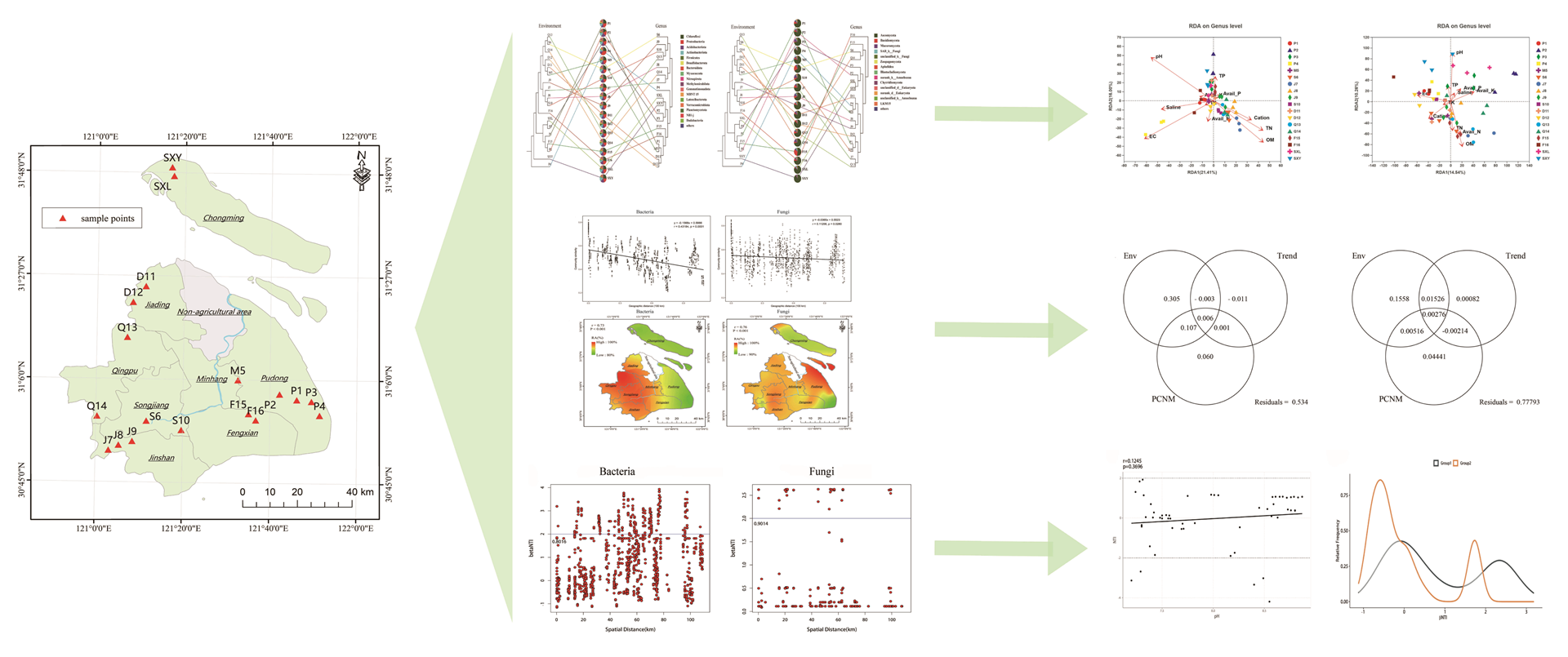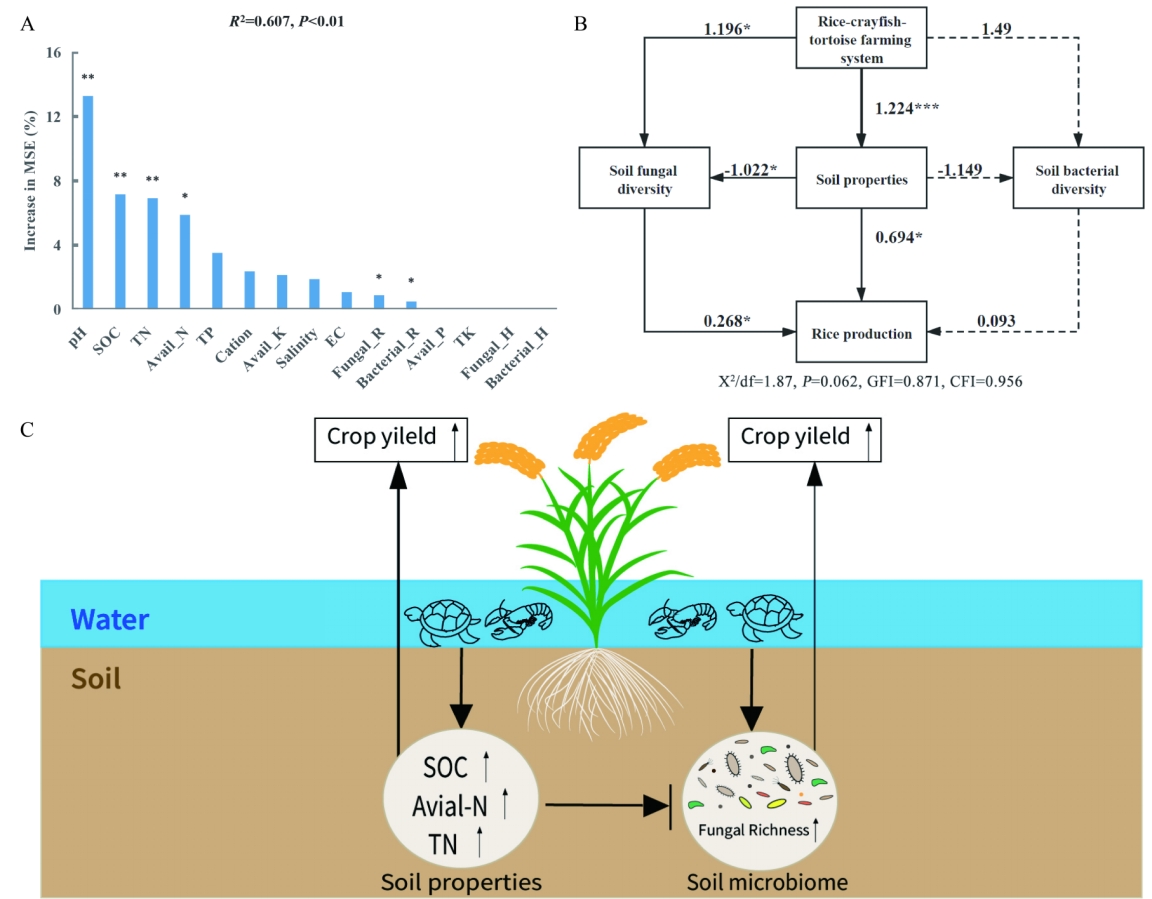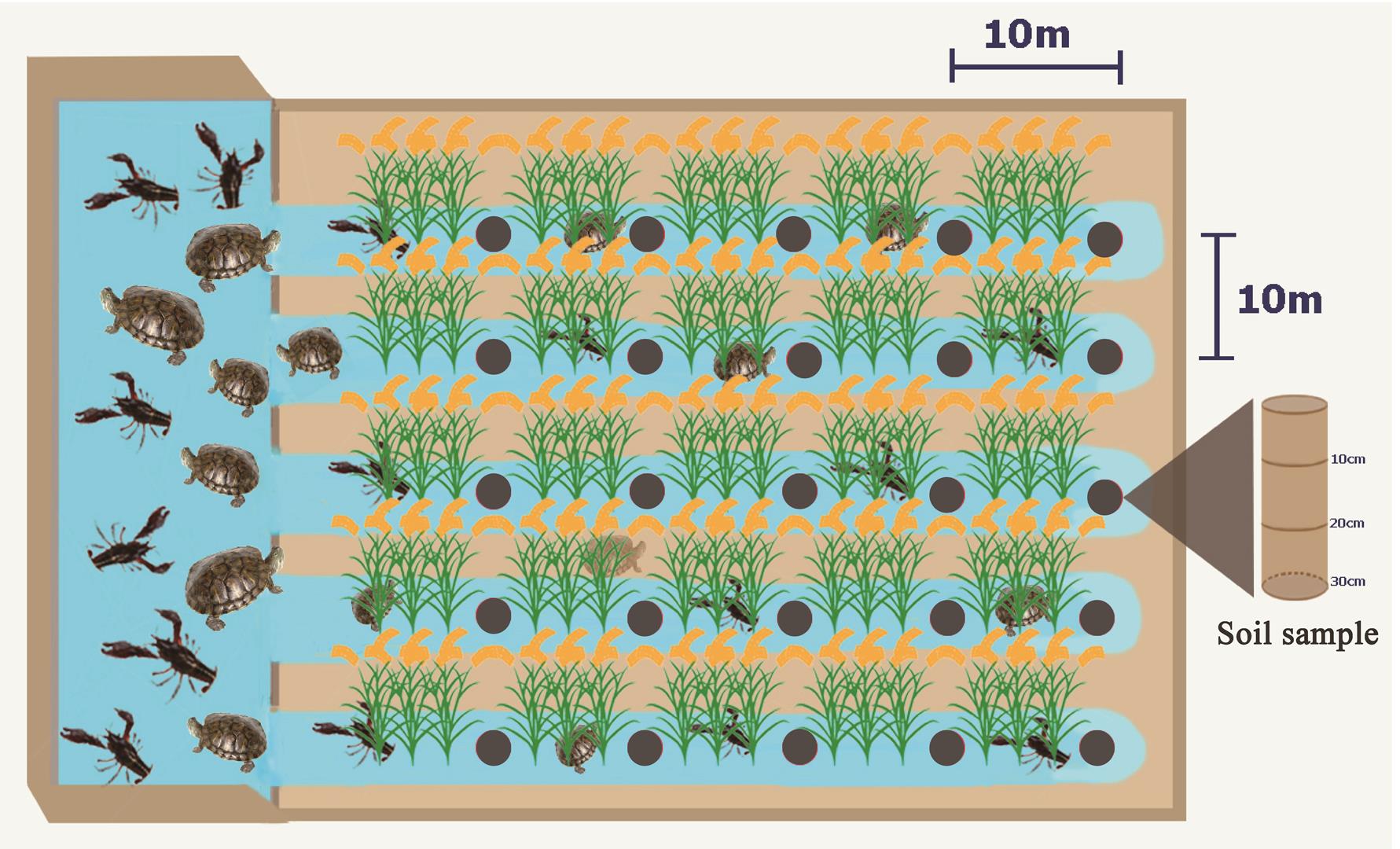Biotechnology Research Institute and Eco-environmental Protection Research Institute achieved important progresses in the study of soil microbial community construction mechanism and ecosystem function through joint research
The biosafety evaluation research team from Biotechnology Research Institute of SAAS and the environmental detection research team from Eco-environmental Protection Research Institute of SAAS jointly made significant advances in the study of soil microbial diversity maintenance mechanism under artificial interference in Shanghai farmland, which laid a solid base for subsequent study in soil microbial community construction and function diversity. The two research teams also discovered the microorganism regulation mechanism on nutrient cycling in rice-crayfish-turtle co-culture system, which implicated important significance in the application of rice-crayfish-turtle co-culture system in resource saving and sustainable development of agriculture.
1. Stochastic processes drive bacterial and fungal community assembly in sustainable intensive agricultural soils of Shanghai, China
Sustainable intensive cropping systems soils have been developed from paleosol or alluvial soils across different regions. However, little is known about the geographical distribution patterns of microbes and microbial community assembly. Here, we investigated the impact of local geochemical properties and geographic distance on stochastic/deterministic microbial community assembly processes using high-throughput sequencing and phylogenetic null modeling analysis. Our results showed that soil pH was the most important environmental factor determining bacterial and fungal community structure. We also mapped the spatial distributions of the dominant bacterial and fungal taxa across the sustainable agricultural fields, making it possible to forecast the responses of agricultural ecosystems to anthropogenic disturbance. These results unveil assembly mechanisms of soil microbial community after several decades of sustainable intensive management, and contribute to understand the role of microbes in ecosystems in establishing a functional equilibrium which may enable sustainability to be preserved.

The results were published in Science of The Total Environment (IF 7.963), https://www.sciencedirect.com/science/article/abs/pii/S0048969721010883. Associate Prof. Shuangxi Li was the first author of the paper and Prof. Peng Li and Prof. Weiguang Lv were the corresponding authors. The research was supported by the Shanghai Agricultural and Rural Committee, the Natural Science Foundation of Shanghai and the Excellent Team Program of Shanghai Academy of Agricultural Sciences.
2. Long-term rice-crayfish-turtle co-culture maintains high crop yields by improving soil health and increasing soil microbial community stability
The long-term effects of crop and aquatic animal co-culture system on soil health and microbial community stability, in addition to their relationships with rice yields, remain unclear. Here, 7- and 12-year farming experiments with rice-crayfish-turtle (RCT) co-culture systems were conducted and compared against rice monoculture (RM) in a suburb of Shanghai, China. Increased years of RCT farming led to higher contents of soil organic carbon (SOC), total nitrogen (TN), and available nitrogen (Avail_N), but less total phosphorus (TP) when compared against the RM treatment. The qPCR analyses indicated that RCT farming led to a higher abundance ratio of fungi to bacteria (F:B) in soils than in RM soils. High-throughput sequencing demonstrated that 12-year RCT farming led to much higher soil microbial community diversity. Network analysis of 12-year RCT revealed more abundant microbial network modules and a larger proportion of negative correlations compared against 7-year RCT and RM networks. The improvement of soil health by RCT farming revealed the promotion of more suitable environments for soil microbial communities, which could contribute to nutrient cycling and further increase crop production yields.

The results were published in Geoderma (IF 6.114)(https://www.sciencedirect.com/science/article/pii/S0016706122000520). Prof. Peng Li and Associate Prof. Guogan Wu were the first authors of the paper and Associate Prof. Shuangxi Li was the corresponding author. The research was supported by the Shanghai Agricultural and Rural Committee, the Natural Science Foundation of Shanghai and the Excellent Team Program of Shanghai Academy of Agricultural Sciences.
(posted by Peng Li from Biotechnology Research Institute and Shuangxi Li from Eco-environmental Protection Research Institute)


用户登录